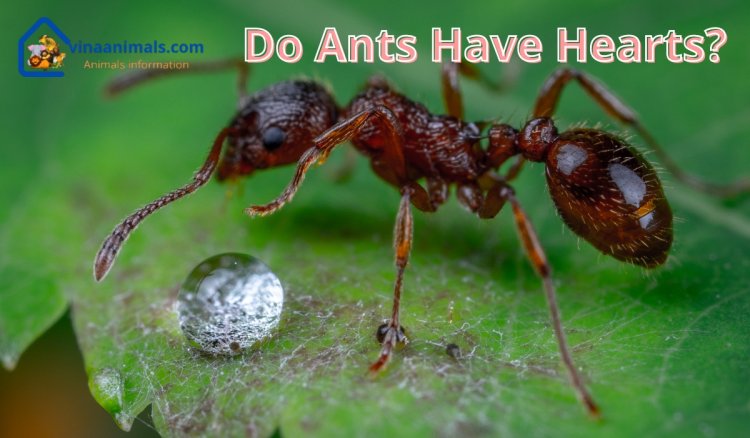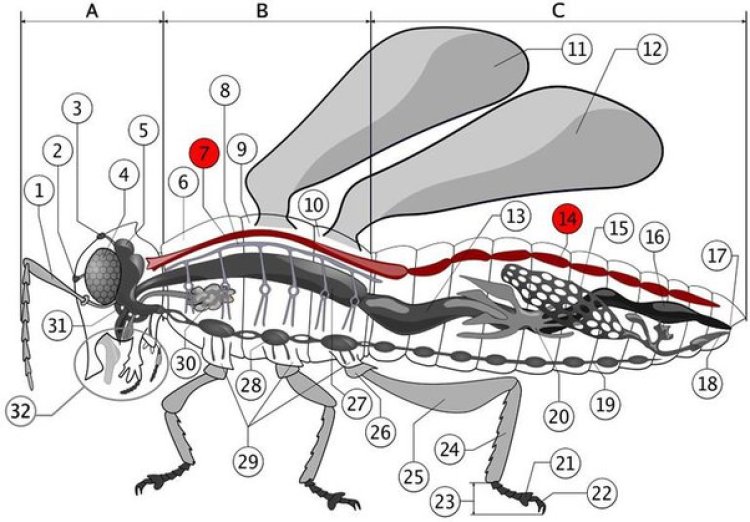Do Ants Have Hearts? Do Ants Have Blood? Explore The Ant's Circulatory System
Table of contents [Show]
Ants can be found all around the world and in a variety of climates, from rainforests to deserts. They can adapt to many different environments. Many people ask "Do ants have hearts? Do ants have blood?". The answer will be in the content of this article.

Do ants have hearts?
Do ants have hearts? The answer is Yes. Ant hearts function to pump blood to distribute oxygen, nutrients and hormones throughout their bodies.
However, the ant heart has a different structure than the human heart. It has a long tubular shape located near the middle of the chest. The ant's heart pumps blood by contracting muscles along its length.
The ant's heart has a number of small holes that function to release CO2 into the air sacs before breathing out through the spiracles. Unlike the 4-chambered structure of the human heart, the ant's heart is just a long tube to pump blood throughout the body.
The queen ant has a developed heart. Worker ants have a simple heart. Male ants have a reduced or absent heart.

Do ants have blood?
The answer is yes. Ants have blood. Ant blood is called hemolymph and circulates throughout the body.
Ant blood is a colorless liquid. However, when exposed to air, it will turn green, yellow, ... depending on the different ant species.
Ant blood contains nutrients, oxygen, and hormones to supply to the body's organs. Compared to human blood, ant blood has fewer cells and can carry less oxygen.
According to many scientific studies, queen ants also use hemolymph to communicate with members of the colony, send pheromone signals, fight predators and support egg-laying.
Ant's heartbeat
The ant's heart rate will change in different environmental conditions, details are as follows:
- Normal conditions: Steady heartbeat rhythm to maintain circulation of hemolymph throughout the ant’s body.
- High activity or stress: Increased heart rate to support increased oxygen and nutrient demands.
- Low temperature or hibernation: Heart rate and metabolic activity may decrease to conserve energy and survive harsh conditions.
- Injury or infection: Enhanced heart activity to facilitate immune responses and deliver immune cells to the site.

Ant's circulatory system
The ant's circulatory system lacks the complexity of closed circulatory systems found in vertebrates, it is well-suited to their small size and the basic physiological requirements of these insects. Hemolymph plays a crucial role in nutrient transport, waste removal, and gas exchange within an ant's body.
Here's an overview of the main components and features of an ant's circulatory system:
- Hemolymph: Ants have a circulatory fluid called hemolymph, which is somewhat analogous to blood in vertebrates but lacks red blood cells and hemoglobin. Hemolymph serves various functions, including the transport of nutrients, hormones, and waste products.
- Dorsal Aorta: Although ants do not possess a true heart, they have a tubular structure known as the dorsal aorta. The dorsal aorta acts as a pumping organ responsible for moving hemolymph throughout the ant's body. Contractions of the dorsal aorta, along with the ant's body movements, help circulate hemolymph.
- Open Circulatory System: Ants have an open circulatory system. Unlike vertebrates with closed circulatory systems, hemolymph is not confined to a network of blood vessels like arteries and veins. Instead, it flows directly into the body cavity, where it bathes the organs and tissues.
- Hemocoel: The body cavity of ants, known as the hemocoel, is where hemolymph flows freely. This open arrangement allows for direct contact between hemolymph and the organs and tissues, facilitating the exchange of nutrients, gasses, and waste products.
- Spiracles: Ants have small openings called spiracles located along the sides of their body segments. These spiracles serve as entrances and exits for air. Through spiracles, oxygen enters the body and comes into contact with hemolymph, enabling gas exchange. Carbon dioxide, a waste product of respiration, exits the body through the same spiracles.
Above is the answer to the question:“Do ants have hearts? Do ants have blood?”. Hopefully, this article will help you better understand the ant's circulatory system.








![Do Ants Have Teeth? How Many Teeth Do Ants Have? [Do You Know?]](https://vinaanimals.com/uploads/images/2023/09/image_380x226_65070de7b10e6.jpg)

